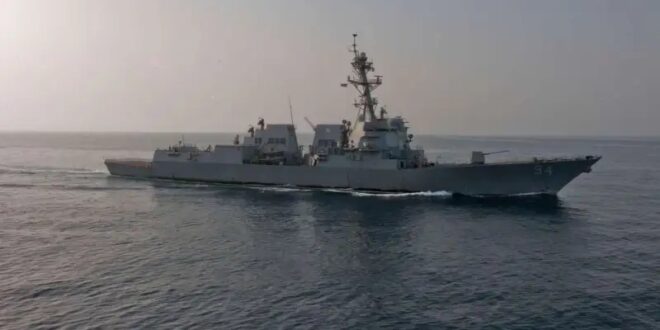As tensions continue to rise in the Black Sea between Russia and Ukraine, the US must demonstrate its commitment to protecting international waters and freedom of navigation for all nations. The recent visit by the USS Nitze to Turkey’s Golcuk Naval Base serves as a reminder of American strength and support.
Background on US Warship USS Nitze and its Visit to the Region
The Arleigh-Burke-class guided missile destroyer, USS Nitze (DDG 94), was commissioned in 2009 and is part of Destroyer Squadron 26, currently based in Yokosuka, Japan. Previously, USS Nitze was sent on a routine deployment to conduct maritime security operations in the Mediterranean Sea and Arabian Gulf. However, on May 16, 2021, it made a port call in Istanbul before heading toward Golcuk Naval Base. At Golcuk Naval Base, it hosted several US diplomats, including Ambassador John Bass, who also visited several other US warships in different parts of Turkey during his trip. After spending time at Golcuk Naval Base, USS Nitze departed from there on May 24, 2021, en route back to her Forward Deployed Naval Forces (FDNF) homeport in Yokosuka, Japan, via Suez Canal.
The Arleigh Burke-class destroyers are part of the United States Navy’s Fleet Response Plan and are typically deployed for six months in the 7th Fleet area of responsibility (AOR). The AOR includes “the Western Pacific Ocean, Indian Ocean, Arabian Gulf, and Red Sea regions,” according to the US Navy’s website. Additionally, these warships operate with NATO forces in the Mediterranean Sea and other areas requiring “maritime security operations.”
The ships of this class are equipped with an Aegis Combat System and can perform multiple roles, including surface warfare, anti-aircraft warfare, anti-submarine warfare, and electronic warfare. Furthermore, they have advanced capabilities allowing them to receive data from external sources such as satellites or aircraft and display it on large screens within their Combat Information Centers (CIC). This capability allows them to act quickly when a threat is detected and maintain situational awareness even when out of contact with external assets. These destroyers also carry Tomahawk missiles which can be used offensively or defensively, depending on the situation.
 Eurasia Press & News
Eurasia Press & News



